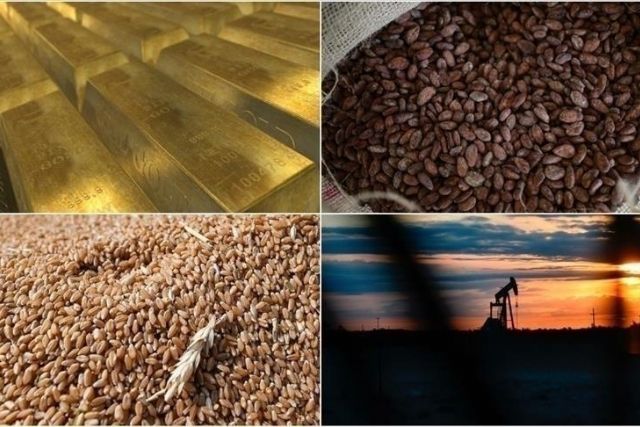Commodity market soar on dovish Fed statements
Commodities follow upward trend last week as demand for US dollar, bond yields decline, analysts say

Istanbul
ISTANBUL
Weeks of uncertainty and selling pressure in the commodity market gave way to an uptrend last week as the Fed signaled in its dovish statements that it may start cutting rates next year.
Fed Chairman Jerome Powell stated that they believe the policy rate to be probably at or near its peak during the tightening cycle and that the bank officials do not find it appropriate to raise the interest rates further, although they do not want to take the possibility off the table, either.
Last Wednesday, the Fed kept its policy rate unchanged within expectations at a 22-year high of 5.25%-5.50%.
In light of these developments, the US 10-year Treasury bond yield, which saw its lowest level since July 27 at 3.88%, ended the week at 3.9%, with a decrease of approximately 32 basis points.
The US Dollar Index, which tested 101.8 and fell to its lowest level in nearly four months, also dropped by 1.4% on a weekly basis to 102.6.
Highest weekly gain in palladium since February 2022
Palladium saw sharp rises after the UK announced new sanctions against Russia, banning British citizens and companies from trading in a wide range of Russian metals.
Although the sanctions imposed on Russia did not include the supply of palladium from the country, the price reaction of palladium was harsh as the country accounts for about 40% of the supply.
Analysts stated that the strengthening of dovish expectations supported the ounce price of gold, while the decline in bond yields continued to suppress the alternative cost of gold.
Last week, the ounce of gold climbed by 0.8%, the ounce of silver by 3.5%, palladium by 23.7%, and platinum by 2.5%.
Supply concerns were highlighted by the news of restrictions on the acquisition of Russian-origin metals, including copper, nickel, aluminum, lead and zinc.
Industrial production in China exceeded expectations by 6.6% year-on-year in November, easing demand concerns and positively affecting copper prices.
Copper rose by 1.3%, lead 2.5%, aluminum 3%, nickel 1.6%, zinc 2.3% last week.
Brent crude oil on the gain
The rise in oil prices was driven by the Fed's dovish signals on monetary policy and rising demand for oil in the US.
However, according to data from the US Energy Information Administration (EIA), commercial crude oil stocks in the country decreased by about 4.3 million barrels the week before.
The market expectation forecast was that the stocks would reduce by 1.5 million barrels.
The International Energy Agency (IEA) reported that, compared to the previous month, global oil production lowered by 120,000 barrels per day to 102.1 million barrels in November.
In the same period, crude oil production by the Organization of Petroleum Exporting Countries (OPEC) lessened by about 100,000 barrels per day to 28.1 million barrels.
Brent crude oil finished the week with a 1.4% growth, while natural gas traded on the New York Mercantile Exchange lost 3.5%.
Increase in coffee exceeded 7%
Agricultural commodities followed a mixed course last week.
Declining rainfalls in Brazil highlighted concerns over production and coffee prices surged.
Prices continue to descend on the news of incentives for sugar production in India and an improved outlook for Brazilian production.
Cotton traded on the Intercontinental Exchange decreased by 2%, cocoa by 0.4%, and sugar by 5.1%, while coffee prices increased by 7.3%.
In Argentina, the government announced the devaluation of the Argentine peso by more than 50% against the US dollar and the restrictions on public spending to fight against the financial crisis, which resulted in the suppression of wheat and corn prices.
Wheat traded on the Chicago Mercantile Exchange lost value by 0.4% and corn by 0.6%, while soybeans gained 2.2% and rice 0.1%.
*Writing by Emir Yildirim





